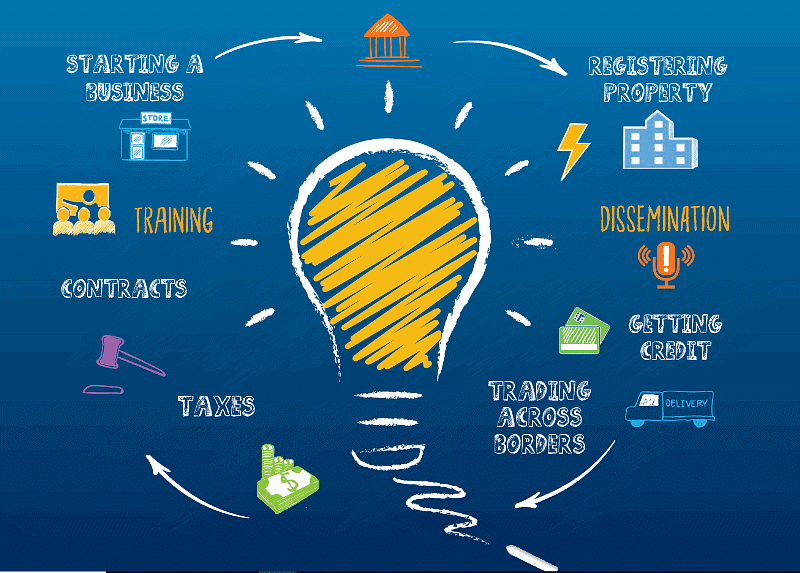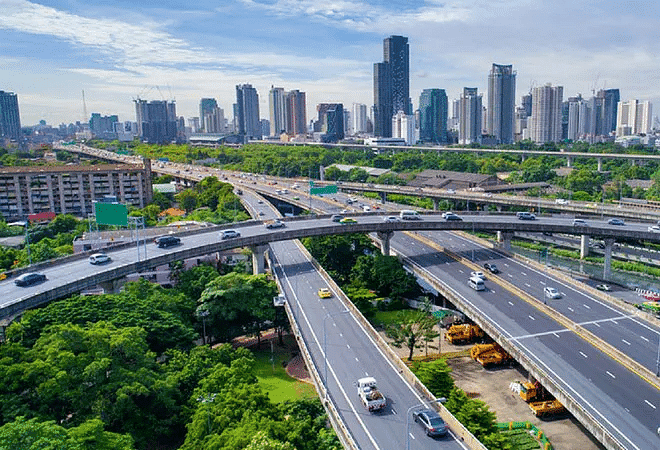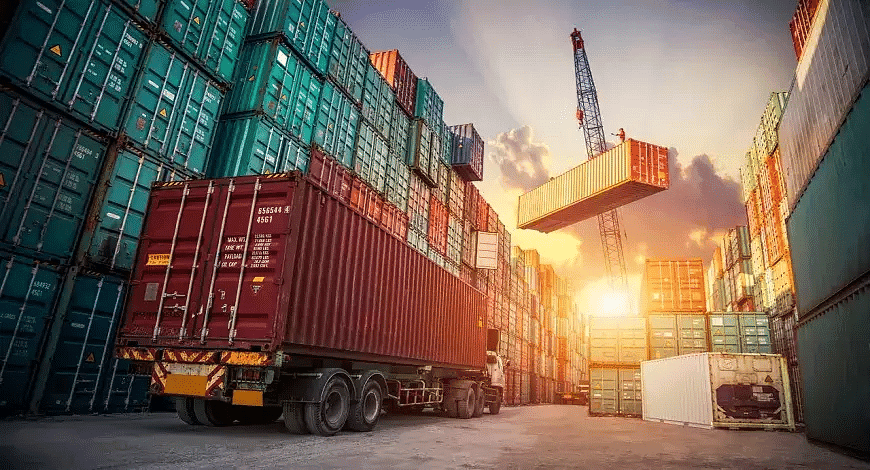Ramesh Singh Summary: Industry & Infrastructure- 2 | Indian Economy for UPSC CSE PDF Download
Ease of Doing Business
- Doing Business report, an annual publication (since 2004) of the World Bank Group ranks the countries of the world on the basis of them 'regulations that enhance business activity and those that constrain it'. Popularly known as 'ease of doing business report' it measures the state of business regulation in countries on the following 12 parameters.

- The Doing Business 2020 report India has been ranked 63rd among the 190 countries. This shows a jump of 14 ranks over the preceding report. Though, only two cities, Delhi and Mumbai are included in the report it speaks enough about the business regulatory environment in the country.
- The report has recognized India as one of the ten economies that have improved the most (from 142nd in 2014 to 63rd in 2019).
Make in India
- Make in India was launched in September 2014 by the Gol to encourage multinational as well as domestic companies to manufacture their products in India.
- The initiative is set to boost entrepreneurship, not only in manufacturing but in relevant infrastructure and service sectors as well.
Major features :
(i) Vision : Attracting both capital and technological investment in India enabling it to become the top global FDI, surpassing even China and the United States.
(ii) Objective : To focus on job creation and skill enhancement in 25 key sectors of the economy, including automobiles, aviation, biotechnology, defence manufacturing, electrical machinery, food processing, oil & gas, and pharmaceuticals, among others.
(iii) Logo : Is inspired from Ashoka Chakra - is a striding lion made of cogs, symbolising manufacturing, strength and national pride.
(iv) Assemble in India for the World : The current environment presents India an 'unprecedented ' opportunity to chart a China-like, labour-intensive, export trajectory and there by create unparalleled job opportunities. For this India need to integrate Assemble in India for the world into Make in India.
Start-Up India
- The Start-up India scheme was launched by the Gol in January 2016 with a slogan, Start-up India and Stand-up India.
- The mission/scheme aims to build a strong ecosystem for nurturing in novation, driving sustain able economic growth and generating large-scale employment opportunities.

- Apart from the technology sector the start-up movement will extend to a wide array of other sectors including agriculture, manufacturing, healthcare and education.; and from existing tier 1 cities will extend to tier 2 and tier 3 cities including semi-urban and rural areas.
- The policy steps taken by the Government have left a very positive impact on innovation and entrepreneurship in the country. There is a need of encouraging startups at the district level to have an inclusive effect of income generation felt at grass root level. The present situation of start-ups.
Industry 4.0
- Industry 4.0, known as the fourth industrial revolution, integrates technologies like cloud computing, IoT, machine learning, and AI into manufacturing for enhanced efficiencies.
- India is gradually adopting these technologies in manufacturing, aiming for broader implementation.
- Key policy initiatives include enhancing internet penetration, self-reliance in semiconductor technology, and creating a conducive environment for advanced manufacturing.
- Government initiatives like SAMARTH and Udyog Bharat 4.0 promote technological solutions in manufacturing through awareness and demonstrations.
- The Centre for Fourth Industrial Revolution, established in 2018, focuses on developing policy frameworks for emerging technologies.
- Efforts to foster innovation include support for incubation, industry-academia partnerships, funding, and strengthening the IP regime.
- India's focus on IP modernization has led to a significant increase in domestic patent filings, reflecting a shift towards a knowledge-based economy.
- According to the Global Innovation Index 2022, India ranked 40th globally and became the most innovative nation in the lower middle-income group, surpassing Vietnam.
COVID-19 and Industrial Reforms
- In response to COVID-19, India launched the Bharat Abhiyan in May 2020 to promote self-reliance.
- Industrial reforms included banning certain defence imports to boost indigenization and allowing 74% FDI in defence manufacturing under the automatic route.
- The Ordnance Factory Board (OFB) was to be corporatized and listed for enhanced efficiency and autonomy in defence production.
- Private participation in space activities was encouraged, granting private firms access to ISRO facilities and easing geo-spatial data policies.
- Aviation reforms involved auctioning 6 airports on PPP mode, easing airspace restrictions, and rationalizing MRO tax structures to establish India as an MRO hub.
- Commercial mining of coal was introduced with private sector participation through bidding on a revenue-sharing basis, ending government monopoly.
- Power sector reforms aimed at privatizing power utilities in Union Territories based on a new tariff policy to enhance operational efficiency and viability.
Indian Infrastructure
An Introduction
- Infrastructure is the 'life line' of an economy as protein is the lifeline of the human body. Whichever sector be the prime moving force of an economy, i.e., primary, secondary or tertiary.
- There are three sectors which are considered as the infrastructure universally around the world namely power, transportation and communication. Since, infrastructure benefits the whole economy.
Official Ideology
- Putting in place the quality and efficient infrastructure services is essential to realise the full potential of the growth impulses surging through the Indian economy.
- There is now a widespread that exclusive dependence on the government for the provision of all infrastructure services introduces difficulties concerning adequate scale of investment, technical efficiency, proper enforcement of user charges, and competitive market structure.
- Complete reliance on private production, particularly without appropriate regulation, is also not likely to produce optimal outcomes.
- The approach towards infrastructure has gone for a transformational change since the new policy think tank Niti Aayog came into being.
UDAY SCHEME
- For financial and operational turn around of DISCOMs and to ensure a sustainable permanent solution to the problem, the UDAY (Ujwal DISCOM Assurance Yojana) was launched by the Gol, in November 2015.
- The scheme also aims to reduce interest burden of the DISCOMs, cost of power and their AT&C (Aggregate Transmission & Technical) losses.
- Due to legacy issues, DISCOMs are trapped in a vicious cycle with operational losses being funded by debt. Outstanding debt of DISCOMs were ₹4.3 lakh crore by 2014-15, with interest rates upto 14-15 percent and AT&C losses as high as 22 per cent.
- The scheme assures the rise of vibrant and efficient DISCOMs through a permanent resolution of past as well as potential future issues of the sector.
- It empowers DISCOMs with the opportunity to break even in the next 2-3 years.
- UDAY's performance : As per the Government, the performance of the scheme cannot be called very positive. Of the 28 states that implemented it, 10 have show neither reduced losses or profits in 2019 - 20 (April-December). Also, even as most states registered an improvement in reducing the ACS-ARR gap and in bringing down AT&C losses, they are way behind in achieving the targets as per the UDAY schedule.
Railways
- Indian Railways (IR) is faced with a number of challenges. For speedy capacity creation, IR recognizes the importance of enhancing project execution capabilities.

- Considering the enormity of the resources required for plan investment in rail infrastructure, and given the limitation of public resources, efforts are on by IR to generate sufficient internal surplus, and tap innovative methods of financing, to meet these needs.
- The focus is on prioritising investments in important areas like dedicated freight corridors, high speed rail, high capacity rolling stock, last mile rail linkages and port connectivity, and attracting private and FDI investments to supplement available resources.
High Speed Train Project : The feasibility report of the Japan International Cooperation Agency (JICA) was approved by the Gol in December 2015. A new special purpose vehicle with 50 per cent equity participation from the Ministry of Railways and 50 per cent from the state governments of Maharashtra and Gujarat will be set up to implement the project.
Train 18 : India's first engine-less, semi high-speed train (160 kmph), the Train18 (rechristened Vande Bharat Express) was launched in February 2019. The train is equipped with the finest amenities.
Roads
With about 59.64 lakh km of road network comprising National Highways, state India has the second largest road network in the world. The NH in the country lakh km and carry about 40 per cent of the road traffic.
Financing of the NHDP
- A part of the fuel cess imposed on petrol and diesel is allocated to the NHAI for funding the implementation of the NHDP.
- The NHAI leverages the cess flow to borrow additional funds from the debt market. Till date, such borrowings have been limited to funds raised through 54 EG (capital gains tax exemption) bonds and the short-term overdraft facility.
- Government has also taken loans for financing projects under the NHDP from the World Bank (US$ 1,965 million), Asian Development Bank (US$ 1,605 million) and Japan Bank for International Cooperation (32,060 million yen) which are passed on to the NHAI partly in the form of grants and partly as loan.
- The NHAI has also availed a direct loan of US$ 180 million from the ADB for the Surat-Manor Expressway Project.
Pradhan Mantri Gram Sadak Yoina (PMGSY)
- Launched to provide single all-weather road connectivity to eligible unconnected habitations having population of 500 persons and above in plain areas and 250 persons and above in hill states, tribal (Schedule V) areas, desert areas, and LWE-affected districts as identified by the Ministry of Home Affairs.
- Rural roads has also been identified as one of the six components of Bharat Nirman which has the goal of providing all-weather road connectivity to all villages with a population of 1,000 (500 in the case of hilly or tribal areas).
Bharatmala Parivojana
- Launched in 2015-16,this is a new umbrella program for the highways sector that focuses on optimizing efficiency of freight and passenger movement across the country.
- It aims at bridging critical infrastructure gaps through effective interventions like development of Economic Corridors, Inter Corridors and Feeder Routes, National Corridor Efficiency Improvement, Border and International connectivity roads, Coastal and Port connectivity roads and Green-field expressways.
- The objective of the program is to achieve optimal resource allocation for a holistic highway development.
- Upgradation of many airports, including construction of new terminals, upgradation in 18 non-metro airports, for improving air navigation services the Airport Authority of India (AAI) installing the new ATS automation system.
- In order to address issues concerning viability of the civil aviation sector, particularly the airline industry, a Working Group was constituted on 12, December 2011 under the chairmanship of the Secretary civil aviation.
MARITIME AGENDA 2010 - 20
- The objective of the Maritime Agenda 2010-20 is not only creating more capacity but setting up ports on a par with the best international ports in terms of performance :
(i) A target of 3,130 MT port capacity has been set for the year 2020. More than 50 percent
(ii) Of this capacity is to be created in the non-major ports as the traffic handled by these ports is expected to increase to 1,280 MT.
(iii) This enlarged scale of operation is expected to reduce transaction costs considerably and make Indian ports globally competitive.
(iv) Proposed investment in major and non-major ports b y 2020 is expected to be around ₹2,96,000 crore.
(v) Most of the investment to come from the private sector including FDI (upto 100 percent under the automatic route is permitted for construction and maintenance of ports), and private sector to fund most of the projects through PPP or on 'build operate transfer’ (BOT ) or 'build operate own transfer' (BOOT) basis.
(vi) Private-sector participation will not only increase investment in the ports infrastructure, it is expected to improve operations of the ports through the induction of the latest technology and better management practices.
(vii) Public funds will be mainly deployed for common use infrastructure facilities like deepening of port channels, rail and road connectivity from ports to hinterland, etc.
SMART CITIES
- The Gol has launched the Smart Cities Mission (SCM) with the collaboration of states and UTs for urban development.
- The purpose of the mission is— to drive economic growth and improve the quality of life of people by enabling local area development and harnessing, technology, especially technology that leads to smart outcomes.
- The Mission targets promoting cities that provide core infrastructure and give a decent quality of life to its citizens, a clean and sustain able environment and application of 'smart' solutions.
- The focus is on sustainable and inclusive development and the idea is to look at compact areas and create a replicable model which will act like a light house to other a spiring cities.
PPP Models
- Managing adequate amount of fund for infrastructure development has been always a challenge for India. In reform era, the government evolved the idea of public private partnership (PPP) for the sector aimed at attracting investments from the private sector (domestic as well as foreign). We see an encouraging contributions coming from the private sector in this regard also.
- A brief review of the major PPP models:
(i) BOT-TOLL : The 'Build-Operate-Transfer-Toll' was one of the earliest models of PPP. Other than sharing the project cost (with the Government) the private bidder was to build, maintain, operate the road and collect toll on the vehicular traffic. - BOT-Annuity : This was an improvement over the BOT-TOLL model aimed at reversing the declining interest of the private companies towards road projects by manly reducing the risk for the private players.
- EPC Model : The PPP model which was seen to be a better way out to promote the infra projects were visibly failing by the year 2010 and Government was unable to attract the private players towards the road sector.
- HAM : Hybrid Annuity Model (HAM) is a mix of EPC and BOT-ANNUITY models. In this model the project cost is shared by the government and the private player in ratio of 40:60, respectively.
- Swiss Challenge Model : Government of India, for the first time, announced the use of this model for redevelopment of railway stations in the country. This is a very flexible method of giving contracts (i.e., public procurement) which can be used in PPP as well as non-PPP projects
- PPP Model for other sectors : Though, the idea of PPP model was originally evolved for the infrastructure sector, in recent times, there have been proposals for its uses in other areas, too—such as education, healthcare and even agriculture.
- PPPP Model : Experts have suggested public private people partnership (PPPP) model, too for certain sector in the country. Though such a model has been in use since 2000-01 itself by in agriculture sector to promote participatory irrigation development—in the Command Area Development Programme of 1974 (renamed as Command Area Development and Watershed Management Programme in 2004)—in which individual financial contributions come from the farmers) to develop field channels and drains.
CONCERNS OF PETROLEUM SECTOR
- Petroleum products and natural gas should be included under the Goods and Services Tax (GST), or at least its exclusion should not be indicated in the Constitution Amendment Bill.
- The cess collections could be used to support construction of a network of gas pipelines, which is of crucial importance for providing clean energy to deprived regions of the country. The progress is somewhat constrained at present by having been linked to revival of fertilizer units and development of small industries in areas along the gas highway projects. Alternatively, in order to promote the gas pipeline network, Viability Gap Funding (VGF) may be provided for promoting pipeline assets creation and development of efficient markets.
- Impetus is required for construction of not only cross-country pipelines but also city gas distribution. The present system of bidding by the Petroleum and Natural Gas Regulatory Board (PNGRB) is lopsided and long-drawn-out and needs to be reformed since it has constrained development of the gas network.
- Expansion of the PNG/CNG (Compressed Natural Gas) network could help provide gas connections to rural areas.
- Rationalization of LPG subsidy is essential. It may be useful to cap subsidy to 10 LPG cylinders for each household (that being the maximum used for usual domestic cooking) while aligning taxes and duties on domestic and commercial LPG users.
- Import of Liquefied Natural Gas (LNG) for use in the power industry is exempt from customs duty while LNG for all other uses attracts 5 per cent customs duties. There should be no exemptions for any sector.
- In order to develop a cost-effective and revenue-neutral mechanism for swapping of gas across producing and consuming states for the national gas grid, it is important to make special tax provision for sale of natural gas under the Central Sales Tax Act 1956. Natural gas and LNG may betreated as declared goods to bring about tax parity with crude oil and make prices uniform across states.
Logistics Sector
- Logistics is the back bone of supply chain (management of flows of goods from the point of origin to the point of consumption ). It includes transportation, inventory manage-ment, warehousing, materials handling, packaging, and integration of information. Largely 'unorganised ', the sector has remained 'unexplored' in India

- To strengthen the sector the Government has created a new Logistics Division (in the Department of Commerce).
- Cheaper fund / credit (at lower rates of interest) on longer tenure fund will be facilitated.
- Simplified process of approval (for construction of multimodal logistics (parks) facilities which includes both storage and transportation).
- Increased market accountability through regulatory authority and will attract investments from debt and pension funds.
HOUSING POLICY
- Housing is a key policy priority of the Government today.
- With increasingly 'fluid' population the housing policy need to enable horizontal or spatial mobility (i.e., movement within and between cities) and vertical mobility (to climb socio-economic ladder) as opportunities arise.
- The Economic Survey 2017-18 highlighted certain factors in this regard when the country is going for an ambitious scheme— Housing for All.
- Two basic issues related to the sector is rental and vacant houses-Rental Housing, Vacant Housing.
PMAY-U
- The Pradhan Mantri Awas Yojana-Urbaji (PMAY-U) was launched in June, 2015 to provide 70 pucca house with basic amenities to all eligible urban poor by 2022, a part of the 'Housing for All' (Pradhan Mantri Awas Yojana). By early 2020, a validated (by states and UTs) demand of 1.12 crore houses were registered.
- It is one of the largest housing schemes of the world covering complete urban India. Urban habitats and cities are the epicentres of economic growth which contribute over 60 percent of India's GDP.
- The construction sector accounts for 8.2 per cent of GDP and employs about 12 per cent of the workforce.
- Therefore, the investment made under PMAY-(U) not only provides pucca houses to the eligible families to achieve the goal of 'Housing for All' but also triggers multiplier effect on the overall economy.
- The scheme is being implemented through following four verticals:
(i) In Situ Slum Development (ISSR)
(ii) Credit Linked Subsidy Scheme (CLSS)
(iii) Affordable Housing in Partnership (AHP)
(iv) Beneficiary Led House Construction / Enhancement (BLC)
National Infrastructure Pipeline
- Government has set a target to achieve the GDP of US$ 5 trillion by 2024-25. To achieve this goal India needs to invest about US$ 1.4 trillion (₹100 lakh crores) during 2020 - 25 in infrastructure — and to further sustain the growth by 2030 another US$ 4 .5 trillion.
- To enable economy, achieve the target of investment in the sector, the Government launched (on December 31, 2019 ) the project National Infrastructure Pipeline (NIP).
- The NIP captures the infrastructure vision of the country for the period 2020-25. This is the first-ever exercise undertaken in the country.
|
175 videos|492 docs|159 tests
|
FAQs on Ramesh Singh Summary: Industry & Infrastructure- 2 - Indian Economy for UPSC CSE
| 1. What are the key initiatives under the Make in India campaign? |  |
| 2. How has the Start-Up India program impacted the Indian industrial sector? |  |
| 3. What is Industry 4.0 and how is it revolutionizing the Indian industrial landscape? |  |
| 4. How has COVID-19 impacted industrial reforms in India? |  |
| 5. What role do PPP models play in the development of Indian infrastructure? |  |
















